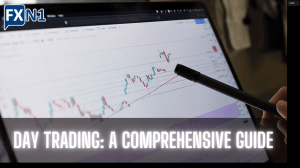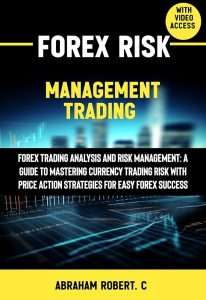Understanding Forex Trading: A Beginner’s Guide
Unlock the secrets of forex trading! Learn about currency pairs, risk management, and strategies to navigate the exciting world of global finance. Start your forex journey today!
Forex trading, also known as foreign exchange trading, is the global marketplace for exchanging currencies. It’s a decentralized, over-the-counter (OTC) market, meaning there’s no central location like a stock exchange. Instead, trading occurs electronically between banks, institutions, and individuals worldwide. Understanding how this complex system functions is crucial for anyone considering entering the forex market.
Understanding the Basics of Currency Pairs
The core of forex trading revolves around currency pairs. Each pair represents the relative value of one currency against another. For instance, EUR/USD represents the Euro against the US dollar. If the EUR/USD exchange rate is 1.10, it means one Euro can be exchanged for 1.10 US dollars. These rates constantly fluctuate based on various economic and geopolitical factors, creating opportunities for profit or loss.
The first currency in the pair is called the “base currency,” while the second is the “quote currency.” When trading a pair, you’re essentially betting on the direction of the base currency’s value relative to the quote currency. A rise in the exchange rate means the base currency has appreciated against the quote currency, and vice-versa.
Major, Minor, and Exotic Currency Pairs
Forex currency pairs are categorized into three groups: major, minor, and exotic. Major pairs involve the US dollar against other major global currencies like the Euro (EUR/USD), British Pound (GBP/USD), Japanese Yen (USD/JPY), and Swiss Franc (USD/CHF). These pairs are highly liquid and experience high trading volumes.
Minor pairs involve two major currencies where neither is the US dollar. Examples include EUR/GBP, EUR/JPY, and GBP/CHF. These pairs usually have slightly lower liquidity compared to major pairs.
Exotic pairs involve one major currency and one emerging market currency. Examples include USD/MXN (US dollar/Mexican Peso) or USD/TRY (US dollar/Turkish Lira). These pairs usually have lower liquidity and can be more volatile.
The Mechanics of Forex Trading
Forex trading involves buying one currency while simultaneously selling another. Profits are generated from the difference in the exchange rate between the entry and exit points of a trade. For example, if you buy EUR/USD at 1.10 and sell it at 1.12, you’ve made a profit. However, the reverse is also true; if the rate drops, you’ll incur a loss.
Traders use various tools and platforms to execute trades. Most trading occurs electronically through online platforms provided by brokers. These platforms offer real-time quotes, charting tools, and order execution capabilities. Understanding how to use these tools effectively is paramount to success in forex trading.
Leverage and Margin in Forex Trading
Forex trading often involves leverage, which allows traders to control a larger position than their initial capital would normally permit. Leverage is expressed as a ratio, for example, 1:100, meaning a trader can control $100,000 with just $1,000 of their own money. While leverage amplifies potential profits, it equally amplifies potential losses.
Margin is the amount of money a trader needs to deposit with their broker to open and maintain a leveraged position. The broker holds this margin as collateral. If a trade goes against the trader and losses exceed the margin, the broker may issue a margin call, requiring the trader to deposit more funds or close the position to avoid further losses.
Factors Influencing Forex Exchange Rates
Numerous factors influence currency exchange rates, making forex trading both exciting and challenging. These factors are complex and interconnected, requiring constant monitoring and analysis.
- Economic Data: Economic indicators such as Gross Domestic Product (GDP) growth, inflation rates, employment figures, and interest rate decisions significantly impact currency values. Strong economic data generally leads to currency appreciation.
- Political Events: Political stability and uncertainty heavily influence currency values. Geopolitical events, elections, and policy changes can trigger significant market movements.
- Central Bank Actions: Central banks play a crucial role in influencing exchange rates through monetary policy decisions, including interest rate adjustments and interventions in the foreign exchange market.
- Market Sentiment: Investor sentiment and speculation can significantly affect currency values. Positive market sentiment leads to currency appreciation, while negative sentiment can lead to depreciation.
- Global Events: Major global events, such as wars, natural disasters, and pandemics, can dramatically affect currency values due to their impact on global economies and investor confidence.
Different Forex Trading Strategies
Successful forex trading requires a well-defined strategy tailored to individual risk tolerance and trading goals. Numerous strategies exist, each with its own advantages and drawbacks.
Scalping
Scalping involves taking advantage of small price fluctuations within a short timeframe, often seconds or minutes. Scalpers aim for small but frequent profits. This strategy requires quick decision-making, technical analysis skills, and a high tolerance for risk.
Day Trading
Day trading involves opening and closing positions within the same trading day. Day traders analyze market trends and news to identify short-term opportunities. This strategy requires discipline and the ability to manage risk effectively.
Swing Trading
Swing trading involves holding positions for several days or weeks, taking advantage of price swings within a larger trend. Swing traders rely on technical and fundamental analysis to identify potential entry and exit points. This strategy requires patience and the ability to manage risk over a longer time horizon.
Position Trading
Position trading involves holding positions for weeks, months, or even years. Position traders focus on long-term trends and fundamental analysis; This strategy requires a deep understanding of market dynamics and the ability to withstand periods of market volatility.
Risks and Rewards of Forex Trading
Forex trading offers the potential for significant profits, but it also carries substantial risks. It’s crucial to understand these risks before entering the market.
- High Volatility: Forex markets are highly volatile, meaning exchange rates can fluctuate dramatically in short periods. This volatility can lead to substantial losses if not managed effectively.
- Leverage Risk: While leverage amplifies profits, it also amplifies losses. Using excessive leverage can lead to significant financial losses and even account liquidation;
- Market Risk: Unexpected market events can significantly impact currency values, leading to losses regardless of trading strategy.
- Liquidity Risk: While major currency pairs are highly liquid, exotic pairs can experience liquidity issues, making it difficult to enter or exit trades quickly.
- Broker Risk: Choosing a reputable and regulated broker is crucial to minimize the risk of fraud or manipulation.
Successful forex trading requires discipline, risk management skills, a deep understanding of market dynamics, and continuous learning. It’s not a get-rich-quick scheme; consistent profitability requires dedication, patience, and a well-defined trading plan. Beginners should start with demo accounts to practice and develop their skills before risking real capital. Thorough research and education are essential for mitigating risks and increasing the chances of success.
Forex trading can be a rewarding experience for those who approach it strategically and responsibly. By understanding the mechanics of the market, developing a sound trading strategy, and managing risk effectively, traders can potentially generate profits. However, it’s crucial to remember that losses are inevitable, and responsible trading practices are essential for long-term success. Continuous learning and adaptation are key to navigating the ever-changing landscape of the forex market. The potential rewards are significant, but so are the potential risks. Careful planning and execution are paramount. Never invest more than you can afford to lose. Finally, always consult with a qualified financial advisor before engaging in any form of investment, including forex trading.







